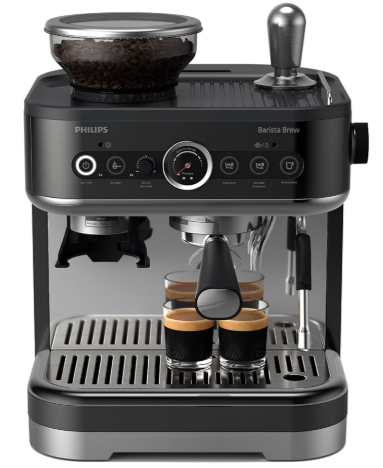Are Digital Scales and Real-Time Apps the New Standard in Brewing?
METHODS
10/5/20255 min read


Introduction to Digital Brewing Technology
The brewing industry has undergone significant transformation over the years, evolving from traditional manual methods to sophisticated techniques that utilize digital technologies. The integration of digital brewing technology has altered not only how beverages are produced but also enhanced the overall brewing experience for both novice and experienced brewers alike. Central to this evolution are digital scales and real-time applications that provide precise measurements and insightful data to make the brewing process more efficient and consistent.
Historically, brewing required a keen understanding of ingredients and instinctive measurements. Craftsmen relied on sensory cues and experience to achieve the desired characteristics in their brews. However, as the craft and science of brewing have matured, the need for accuracy and consistency has driven the adoption of digital tools. Digital scales, for example, offer the precision necessary for quantifying ingredients accurately. This precision is critical, as even small variations in measurements can significantly affect the final product's taste, aroma, and quality.
Moreover, real-time applications facilitate the brewing process by allowing brewers to monitor various parameters such as temperature, fermentation times, and gravity readings. Such tools empower users to make informed decisions based on real-time data, optimizing each batch for maximum quality. The reliance on these advanced technologies highlights a broader shift within the brewing community—a commitment to not just traditional craftsmanship but also to scientific techniques that enhance the brewing process.
As technology continues to advance, the integration of digital brewing technology will likely become a new standard in the industry. This fusion of tradition and innovation promises to elevate the brewing experience, ensuring that both professionals and amateurs alike can produce exceptional beverages with greater ease and precision.
Advantages of Digital Scales in Brewing
The advent of digital scales has revolutionized the brewing process, offering an array of advantages that benefit brewers at every level of expertise. One of the primary advantages of digital scales is their unparalleled accuracy in measuring ingredients. In brewing, precision is paramount; even a slight variation in the quantity of hops or malt can significantly alter the flavor profile of the final product. Digital scales eliminate the guesswork by providing precise measurements, ensuring that each batch adheres closely to the intended recipe.
In addition to accuracy, digital scales foster consistency in brewing. Consistency is essential for brewers who wish to replicate successful batches, as slight variations can lead to varied results. By using digital scales, brewers can standardize their ingredient measurements, which helps maintain the desired flavor and quality across multiple batches. This consistency is particularly crucial for commercial brewers who strive to deliver the same product to consumers repeatedly, thereby building brand loyalty and trust.
The time-saving benefits are another significant advantage these scales bring to the brewing process. Traditional methods often require cumbersome manual measurements that can be both time-consuming and prone to error. In contrast, digital scales streamline this process, allowing brewers to weigh their ingredients quickly and efficiently. This not only expedites preparation but also enables brewers to focus on other critical aspects of brewing, such as fermentation management and quality control.
Furthermore, the accuracy, consistency, and time efficiency that digital scales provide can lead to improved flavors and overall product quality. By ensuring that ingredients are measured correctly and uniformly, brewers can create a deeper and more complex flavor profile, ultimately enhancing the beer's appeal to both amateur enthusiasts and discerning consumers. In this way, digital scales have become an indispensable tool for anyone serious about brewing.
The Role of Real-Time Apps in Brewing
In the modern brewing landscape, real-time apps have emerged as essential tools that significantly enhance the brewing experience. These applications offer a sophisticated level of integration with digital scales and other brewing equipment, thereby providing brewers with a comprehensive approach to managing their brewing processes. The combination of technology and brewing has opened new avenues for hobbyists and professionals alike, fostering improved accuracy and efficiency.
One of the primary functionalities of real-time brewing apps is recipe tracking. These applications allow users to input and save their favorite recipes, adjusting parameters as needed to achieve desired outcomes. By interfacing seamlessly with digital scales, brewers can ensure precise measurements of ingredients at every stage. This precision is critical in achieving consistent flavors and characteristics in the final product. Furthermore, many apps include built-in calculators for scaling recipes based on batch size, making them an indispensable asset for craft brewers.
Another noteworthy feature of these applications is fermentation monitoring. Real-time apps can track key fermentation milestones, such as temperature and specific gravity, allowing brewers to make informed decisions throughout the brewing process. By monitoring these parameters remotely, brewers are better equipped to troubleshoot issues as they arise, resulting in higher quality beer with fewer inconsistencies. Additionally, some apps offer data analytics capabilities, providing insights through historical data trends and brewing patterns. This analytic approach not only helps in refining future batches but also encapsulates the journey from brewing to bottling.
Popular examples of brewing apps, such as Brewfather and Beersmith, exemplify these functionalities, making them valuable companions for brewers at all skill levels. These apps exemplify how adopting real-time technology can transform the brewing process, making it more streamlined and efficient, ultimately leading to superior brews.
The Future of Brewing: Embracing Technology
The brewing industry has experienced significant transformations over the past few decades, largely driven by advancements in technology. As we look to the future, it is evident that the integration of digital scales and real-time applications is likely to reshape the way brewers operate. Automation and digitalization are no longer mere conveniences; they are becoming essential components of modern brewing processes. These innovations promise to streamline operations, enhance precision, and ensure consistency, which are crucial in a field that values quality and repeatability.
Digital scales, for instance, offer brewers the ability to measure ingredients with unparalleled accuracy, enabling the creation of complex recipes that depend on precise ratios. Coupled with real-time applications, brewers can monitor variables such as temperature and fermentation progress remotely, ensuring each batch adheres to the desired specifications. This level of control not only improves efficiency but also provides real-time data that can be analyzed for continuous improvement. The potential for predictive analytics in brewing is vast, allowing brewers to anticipate issues before they arise and optimize their workflows accordingly.
However, embracing technology in brewing is also a topic ripe for debate. There exists a deep-rooted tradition within the industry that celebrates craft and the artisanal aspect of brewing. Many brewers fear that relying too heavily on technology may compromise the essence of their craft. A balance must be maintained; while technology offers undeniable advantages, it is essential to preserve the core values that characterize traditional brewing techniques. As the industry evolves, brewers will need to find a way to integrate these advancements while remaining true to the principles of craftsmanship and innovation.
In conclusion, the future of brewing likely lies in a harmonious integration of technology and tradition. As digital scales and real-time applications become increasingly common, brewers will have the opportunity to enhance their craft while ensuring they remain anchored in the rich heritage of brewing. The unfolding narrative will center on how to make the most of these advancements without sacrificing the artistry that defines this age-old practice.
One of our favorite coffee makers....
PHILIPS Barista Brew Semi Automatic Espresso Machine


About this item
Brew like a barista: The Philips Barista Brew Espresso Machine empowers coffee enthusiasts to create barista-quality brews with tools like the 58mm portafilter and single & dual walled filter baskets.
Integrated guidance: Enjoy intuitive guidance for crafting every cup, ensuring a rich aroma and satisfying espresso experience with the premium calibrated tamper & countertop-safe tamping system.
Elevate your coffee experience: Enjoy a 250g bean container that ensures freshness of your beans.
Upgrade your milk frothing experience: Elevate your milk frothing experience effortlessly with the 450ml stainless steel milk jug and powerful steam wand.
Choose your ideal brew: experience convenience with the Americano button and integrated hot water outlet, or choose a single or double espresso.
Click 'Shop Now' to find on Amazon...
Why the PHILIPS Barista Brew Semi-Automatic Espresso Machine one of our favorites...
The PHILIPS Barista Brew Semi Automatic Espresso Machine is more than just a coffee maker—it's a daily dose of barista-level bliss in our own kitchen. It’s quickly become one of our favorite machines, and here's why.
First, let’s talk about consistency. This machine delivers rich, velvety espresso shots with the perfect crema—every single time. Whether you're pulling a single or a double, the semi-automatic design gives you control without being overly complicated, making it ideal for both beginners and seasoned home baristas.
The built-in steam wand is another major win. It creates creamy, café-quality microfoam for lattes, cappuccinos, and flat whites. It heats up quickly and gives you just the right amount of power to texture milk exactly how you like it.
